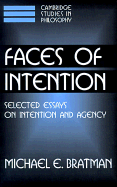Book contents
- Frontmatter
- Contents
- Acknowledgments
- 1 Introduction: Planning Agents in a Social World
- PART ONE ACCEPTANCE AND STABILITY
- PART TWO SHARED AGENCY
- PART THREE RESPONSIBILITY AND IDENTIFICATION
- PART FOUR CRITICAL STUDIES
- 11 Davidson's Theory of Intention
- 12 Castañeda's Theory of Thought and Action
- 13 Cognitivism about Practical Reason
- 14 Review of Korsgaard's The Sources of Normativity
- Index
12 - Castañeda's Theory of Thought and Action
Published online by Cambridge University Press: 18 December 2009
- Frontmatter
- Contents
- Acknowledgments
- 1 Introduction: Planning Agents in a Social World
- PART ONE ACCEPTANCE AND STABILITY
- PART TWO SHARED AGENCY
- PART THREE RESPONSIBILITY AND IDENTIFICATION
- PART FOUR CRITICAL STUDIES
- 11 Davidson's Theory of Intention
- 12 Castañeda's Theory of Thought and Action
- 13 Cognitivism about Practical Reason
- 14 Review of Korsgaard's The Sources of Normativity
- Index
Summary
In a variety of papers and books – most especially in his recent work Thinking and Doing ([6]) – Hector-Neri Castañeda has developed and refined one of the most subtle and thorough philosophical theories of the relation of thought to action to be published in recent years. I begin this paper by laying out some of the main features of this theory. I then raise some questions about this theory, which lead up to a challenge to Castañeda's basic conception of practical thinking.
A central case in which thinking issues in intentional conduct is the case in which one's practical reasoning concludes with an appropriate intention and, as a result, one acts accordingly. Castañeda focuses on this central case. He wants a theory of practical reasoning which explains how various mental elements enter into such reasoning and how they are related to its conclusions.
Castañeda supposes that among the basic elements in such reasoning are one's beliefs and intentions, and that both believing and intending can be understood as the endorsement (acceptance) of a certain thought-content (noema). For example, to believe it will rain is fully to endorse the proposition that it will rain. Analogously, to intend to run is also fully to endorse an appropriate noema. It is not, however, to endorse the proposition that one will run, but rather what Castañeda calls the intention canonically expressed by ‘I to run’. The difference between intending to run and believing one will lies not in a difference in attitude towards the same proposition (that one will run) but in the different contents of the same generic attitude of endorsement.
- Type
- Chapter
- Information
- Faces of IntentionSelected Essays on Intention and Agency, pp. 225 - 249Publisher: Cambridge University PressPrint publication year: 1999



